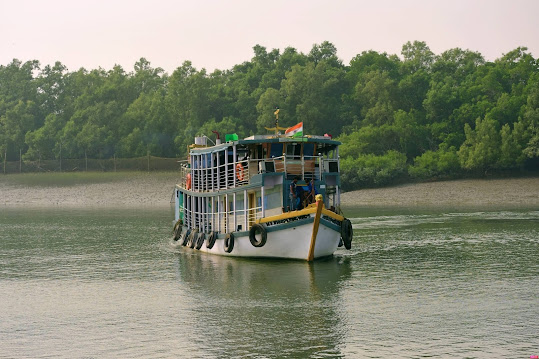Birdwatcher's Paradise: Avian Delights in Sundarban
Sundarban is the paradise of birds in Sundarban. Housing several meandering rivers and small islands, Sundarban happens to be the world’s largest mangrove forest. Such a massive area makes it ideal for birds to reside. This year, I and my friends had the chance to spot numerous birds in Sundarban. We were not much hopeful about the sights, but what we saw will remain in our hearts forever.
.jpg) |
| Kingfisher In Sundarban Mangrove Forest |
The birdwatching activity in Sundarban was so soothing and adventurous that not expressing it will be a grave crime. That is why, we will explain the entire birdwatching experience on the Sundarban tour in detail.
Okay, let us just express that we are truly awed by the explicit detailing in the feathers of the birds. We could not help but wonder how mother nature shaped every species with such breathtaking features. So, we visited Sundarban in the middle of February this year. The weather in Sundarban gets pretty hot during the summer. However, our entire Kolkata to sundarban tour package was designed by Sundarban Houseboat. Even though they have several tour packages, listening to our requirements, they customise the trip accordingly. And we rented the entire boat for 2 days and 1 night for an early morning bird watching.
We reached Godkhali Jetty from Kolkata around 12 P.M., in the vehicle predecided by our Sundarban tour Operator. Upon reaching, we boarded the Houseboat and went to the cabins of our choice. As we freshen up quickly, we were served an authentic Sundarban Thalli which contained rice, thinly sliced potato fries, Sukto, Lau pata chingri, Moong dal cooked with FIsh, Vetki Paturi, batichachchori, and Misti doi. As we cherish our lunch, our tour coordinator said that if we come to Sundarban in May, we will get the best Shorshe Ilish. Upon hearing this, the two of our group decided to visit the Sundarban Hilsa Festival.
 |
| Collared Kingfisher on the Java Plum Tree |
Anyways, while we were eating on the deck, we saw the Collared Kingfisher or Mangrove Kingfisher on the java Plum tree. This excites us to start the next morning bird watching earlier. However, after luch, we were relaxing on the deck. The weather was comfortable with easy wind passing through the canals. As we lay facing the sky, we saw, Yellow Wagtail flying in groups. As we have seen the bird from a close, we understand that the picture does no justice to the bird. We have also seen Asian Dowitcher, Ashy Prinia, Asian Pied Starling, etc.
As sun moves down, we heard the chirping birds flying towards their home. Staying in city, we can hardly see the sky. However, from Sundarban Houseboat, we saw the patterns of birds flying. How the birds make different shapes while flying, sending signals to other birds. It made us realise how voicing out is not the only way to communicate, and birds and animals can do that better than humans.
We spent the entire day watching the birds fly. At the same time, we have already reached Sajnekhali where we will be anchoring for the night. Late in the same evening, we went to the Sajnekhali Bird Sanctuary, but it was closed for the night. So, we got our tickets for the next day and went ahead to explore the local market.
By 9 P.M., we returned to the boat to get our dinner. We asked our tour coordinator to arrange local foods in Sundarban. So, we had Roti, Snake gourd Curry with Pithas in deserts. By 10 P.M., we went to our cabins as we have to start the day early for bird watching.
The next morning, we woke up around 5 A.M. and we went to the deck with coffee to start our morning Sundarban Safari of bird watching. Before going there, we had run extensive research on the birds in Sundarban. And we were quite excited to see the 5 different types of kingfishers here.
However, we got to see only 4 types of kingfishers(add any 4 types of kingfishers including the collared one). Apart from that, we spotted several migratory birds here, but we could not identify them all. Here is the list of the bird we saw on our Sundarban trip.
Our tour conductor informed us that we were lucky in watching so many birds during the safari as well as in Sajnekhali Bird Sanctuary. And to be honest, we planned the trip, taking inspiration from When on a Break. So, we were hopeful about the adventure. But, we did not think that the number will be so much. So, when you do a Sundarban tour booking, promise to keep the islands clean and maintained.
As we return from the sanctuary, our boat started to return to the Godkhali jetty to return to Kolkata. Even though the journey was short, we had a pleasurable, adventurous, yet comfortable trip.

.jpg)


Comments
Post a Comment